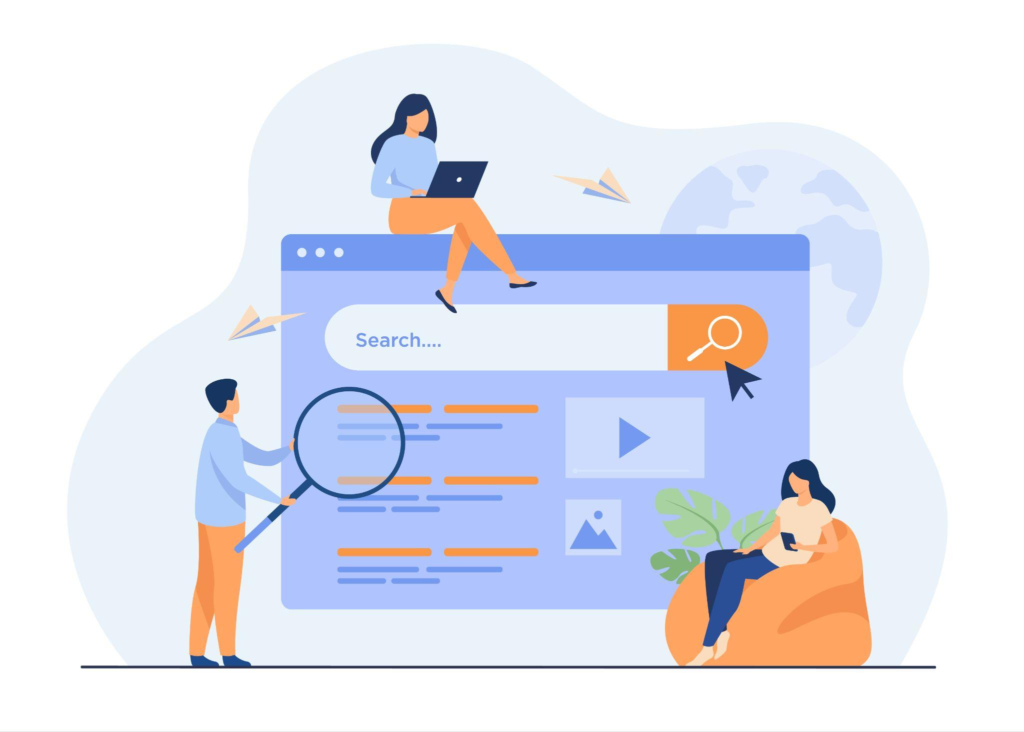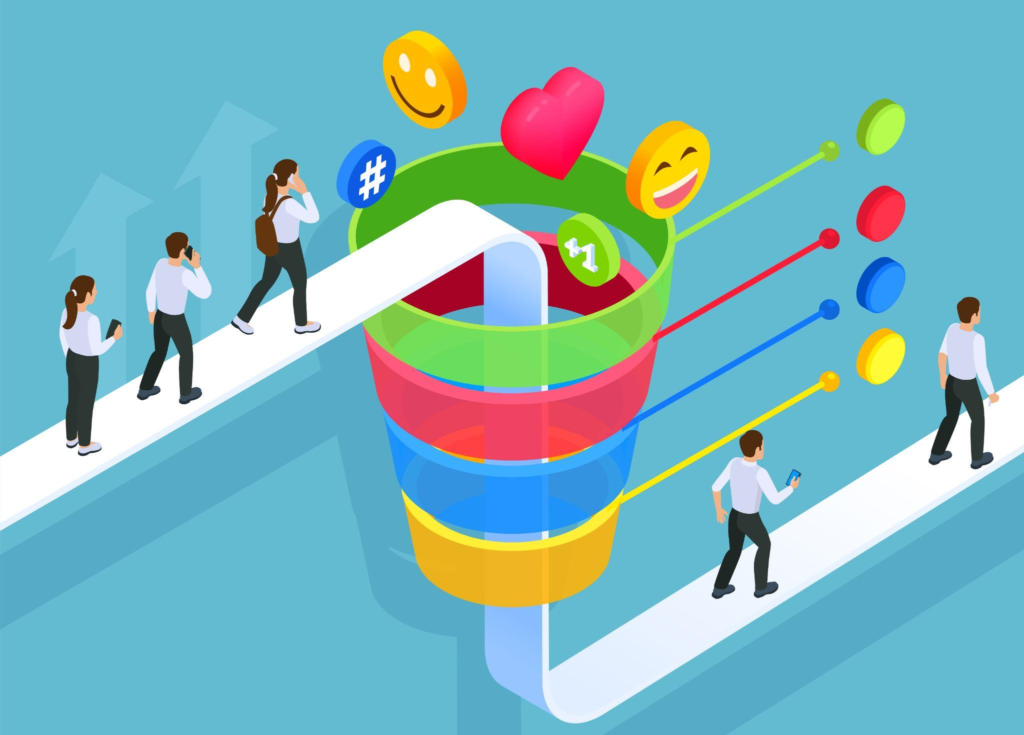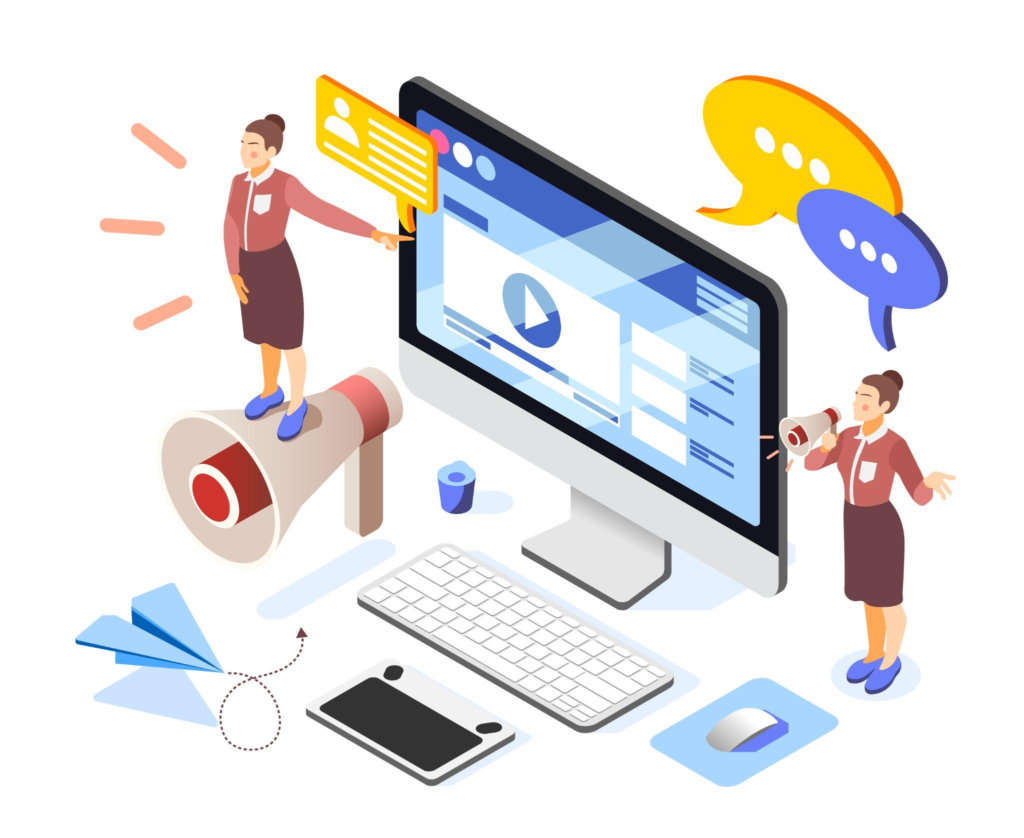The Essence of B2B Lead Generation
In the fast-paced and ever-evolving world of business, success is contingent on one fundamental principle: generating leads. For business-to-business (B2B) enterprises, this is not merely a notion; it’s the very lifeblood that sustains and propels their operations. Lead generation is the process of identifying, attracting, and nurturing potential clients, with the ultimate goal of converting them into loyal customers. In this article, we’ll embark on a journey to explore the essence of B2B lead generation, deciphering why it’s so crucial and how it’s achieved.
The Heart of B2B Lead Generation
Unlike business-to-consumer (B2C) marketing, where the target audience can be vast and diverse, B2B marketing operates in a realm of precision. It’s not about casting a wide net and hoping for a few catches; instead, it’s about spearfishing—carefully aiming for and capturing the right leads. These leads are not just any potential clients; they are the ones who are not only interested in your products or services but also have the potential to become high-value, long-term customers.
B2B lead generation revolves around a strategic and data-driven approach. It entails understanding the unique pain points, challenges, and needs of your target audience and then delivering solutions that address these issues. It’s a process that necessitates meticulous market research, precise targeting, and a commitment to nurturing leads as they progress through the sales funnel.
The B2B Lead Generation Funnel
To grasp the essence of B2B lead generation, it’s vital to comprehend the structure of the B2B lead generation funnel, which typically consists of three key stages:
1. Top of the Funnel (TOFU)
At the widest part of the funnel, the primary objective is to create brand awareness and attract potential leads. These individuals or companies may not be actively seeking your products or services yet, but they fall within your target demographic. Content at this stage should be educational and informative, addressing common industry challenges and providing value to your audience.
2. Middle of the Funnel (MOFU)
As leads progress down the funnel, they move into the MOFU stage. Here, they are actively looking for solutions to their problems and are open to considering different providers. Content at this stage should be more specific, focusing on the benefits and unique selling points of your offerings.
3. Bottom of the Funnel (BOFU)
The BOFU stage is where leads are ready to make a decision and are actively comparing providers. Content at this stage should be highly tailored, addressing specific pain points and showcasing why your solution is the best fit.
Google Ads: Your B2B Lead Generation Catalyst

In the ever-evolving landscape of online marketing, staying ahead of the curve is crucial for business-to-business (B2B) enterprises seeking to generate high-quality leads. In this digital era, where information is a click away, harnessing the power of online advertising is not just an option; it’s a necessity. One platform that stands out as a catalyst for B2B lead generation is Google Ads, formerly known as Google AdWords.
Google Ads is a pay-per-click (PPC) advertising platform that allows businesses to place their ads on Google’s search engine results pages (SERPs). It offers a highly targeted and cost-effective approach to reaching potential clients actively searching for products or services in the B2B realm.
Why Google Ads for B2B Lead Generation?

In the digital age, where information flows freely and the business landscape evolves rapidly, B2B lead generation has become both an art and a science. While numerous strategies and platforms exist to connect businesses with potential clients, Google Ads stands out as a powerful catalyst in the world of B2B lead generation. With its wide reach, precision targeting, and measurable results, Google Ads offers a unique opportunity for businesses to find, engage, and convert high-quality leads efficiently.
1. Precision Targeting
Precision targeting in Google Ads is the practice of tailoring your ad campaigns to reach a highly specific audience. It goes beyond broad demographics and encompasses a range of factors that help you connect with the individuals or businesses most likely to benefit from your products or services. The goal is to maximize the efficiency of your ad spend by minimizing wasted impressions on irrelevant audiences.
The Components of Precision Targeting
Precision targeting relies on several key components, each designed to narrow down your audience:
Keywords
Keywords are the foundation of Google Ads. By selecting the right keywords, you can ensure that your ads appear when users search for specific terms related to your offerings. For B2B lead generation, targeting relevant industry-specific keywords is crucial.
Location Targeting
Location targeting allows you to specify where your ads should appear. This is especially valuable for B2B businesses that offer services in specific geographic regions. Whether you’re targeting a local market or international clients, location settings can be finely tuned.
Audiences
Google Ads offers a variety of audience targeting options. You can focus on retargeting previous website visitors, targeting users interested in specific topics, or creating custom audiences based on user behavior.
Demographics
Demographic targeting enables you to reach audiences based on characteristics such as age, gender, and household income. In B2B lead generation, it can be particularly valuable for targeting decision-makers within organizations.
Device and Network Targeting
You can also choose the devices and networks on which your ads appear. This level of control is essential for optimizing user experience and ensuring that your ads display correctly on different platforms.
2. Cost-Effective
For B2B companies, efficiency in marketing spend is paramount. Google Ads follows a pay-per-click model, which means you only pay when a user clicks on your ad. This is in stark contrast to traditional advertising where you pay a fixed fee regardless of the ad’s performance. With Google Ads, every cent you spend is directed towards engaging with potential clients who have expressed an interest in your offerings.
3. Measurable Results
The effectiveness of Google Ads is backed by robust analytics. It provides detailed insights into how your ads are performing. You can track metrics such as click-through rates, conversion rates, and the cost per click. This data-driven approach enables you to make informed decisions, optimize your campaigns, and maximize your return on investment.
Understanding the Mechanics of Google Ads

To effectively leverage Google Ads for B2B lead generation, you need a profound understanding of its core components:
Keywords are the Foundation: The heart of any Google Ads campaign lies in the selection of the right keywords. For B2B lead generation, this involves choosing keywords that resonate with your target audience—words or phrases that potential customers are likely to use when searching for products or services within your industry.
Crafting Compelling Ad Copy: The ad copy you create must be succinct, persuasive, and directly relevant to the search intent of your target audience. It should convey a clear and compelling message about your offering and why it’s the solution your potential customers have been seeking.
Optimized Landing Pages: Driving clicks to your website is only the initial step. Once visitors land on your web pages, it’s imperative to provide them with a seamless, informative, and persuasive experience. Your landing pages must align perfectly with the messaging in your ads and guide visitors toward taking desired actions, such as filling out a contact form or making a purchase.
Understanding Google Ads
Keywords are the key: The heart of Google Ads lies in selecting the right keywords. For B2B lead generation, it’s crucial to choose keywords that resonate with your target audience. These are the words or phrases that potential customers are likely to type into the Google search bar when seeking products or services in your industry.
Crafting Compelling Ads: Your ad copy must be succinct, persuasive, and relevant. It should convey a clear message about your offering and why it’s the solution your potential customers are looking for.
Landing Pages Matter: Driving clicks to your website is just the first step. Once there, your landing pages should provide a seamless, informative, and compelling experience. They must align with the ad’s messaging and guide visitors toward taking action.
Tailoring Google Ads for B2B Success
Google Ads offers a suite of tools and features specifically designed to enhance B2B lead generation efforts:
Ad Extensions: These allow you to include additional information in your ads, such as contact details, location, and links to specific pages on your website. For B2B, these extensions can be customized to highlight services, case studies, whitepapers, or any content that showcases your expertise.
Remarketing: This strategy involves targeting individuals or businesses that have previously visited your website. For B2B, it’s a powerful method of re-engaging with companies that have shown interest in your products or services.
Lead Generation Forms: Google Ads can integrate with lead generation forms, making it easier for potential clients to express their interest and provide their contact details directly within the ad.
Data and Analytics: Google Ads provides a wealth of data and analytics tools that offer insights into your campaign’s performance. For B2B lead generation, this means the ability to continually refine your targeting and messaging to maximize results.
Navigating the Challenges in B2B Lead Generation: Strategies for Success

B2B lead generation is a complex journey filled with numerous obstacles. The path to acquiring high-quality leads in the business-to-business realm is fraught with challenges that demand innovative strategies and perseverance. In this comprehensive guide, we’ll explore the common challenges faced in B2B lead generation and provide insights into how businesses can overcome them to achieve sustainable success.
The Multifaceted Challenges of B2B Lead Generation
The landscape of B2B lead generation presents an array of unique challenges that require a deep understanding of the market and a well-defined strategy to address effectively. Let’s delve into these challenges and discover how they impact the lead generation process.
1. Quality vs. Quantity Dilemma
One of the longstanding debates in B2B lead generation is the balance between lead quantity and lead quality. Many businesses aim to generate a high volume of leads, assuming that more leads equate to more conversions. However, a surplus of low-quality leads can overwhelm sales teams and prove inefficient.
Solution: Striking the right balance is crucial. Prioritize quality over quantity by defining your ideal customer profile and tailoring your lead generation efforts accordingly. Invest time in segmenting leads into marketing-qualified leads (MQLs) and sales-qualified leads (SQLs) to ensure you’re focusing on those with the highest potential for conversion.
2. Misalignment between Marketing and Sales
Effective lead generation requires a harmonious relationship between marketing and sales teams. In many organizations, these teams operate in silos, leading to a disconnect in their objectives and priorities. Misalignment can result in potential leads slipping through the cracks.
Solution: Foster collaboration between marketing and sales teams. Implement Service Level Agreements (SLAs) that outline the responsibilities and expectations of each team in the lead generation process. Establish regular communication channels and share data to ensure that MQLs are effectively handed over to sales for conversion.
3. Extended Sales Cycles
B2B sales cycles can be notoriously protracted. Decision-making processes often involve multiple stakeholders, complex negotiations, and extensive due diligence. This extended timeframe can challenge lead nurturing efforts and increase the risk of leads going cold.
Solution: Understand the nuances of your industry and typical sales cycles. Create content and engagement strategies tailored to prospects at different stages of the sales funnel. Nurture leads patiently and provide valuable information at each touchpoint to keep them engaged throughout the extended sales process.
4. Effective Lead Nurturing
Lead nurturing is a critical component of B2B lead generation. However, nurturing strategies must be carefully crafted to maintain a prospect’s interest and guide them toward conversion. Creating personalized and relevant content is no small feat.
Solution: Invest in marketing automation tools that allow you to segment your leads based on their behavior and preferences. Automate the delivery of personalized content and communication to keep leads engaged. Tailor your content to address specific pain points and provide solutions to their challenges.
5. Data Accuracy and Cleanliness
The accuracy of lead data is paramount. Inaccurate or outdated information can lead to missed opportunities and inefficiencies. It’s not uncommon for contact databases to become cluttered with redundant or erroneous data over time.
Solution: Implement data enrichment and cleansing processes regularly. Utilize data management tools and services to verify, correct, and supplement lead information. Maintaining a clean and accurate database ensures that you’re connecting with viable leads and not wasting resources on outdated or irrelevant contacts.
6. Content Quality and Relevance
In the age of information overload, it’s increasingly challenging to create content that stands out and resonates with your target audience. Building a content strategy that consistently delivers value to your prospects can be a formidable task.
Solution: Invest in market research to understand the pressing challenges and questions of your target audience. Craft content that directly addresses these issues and provides practical solutions. Consistently produce high-quality content, such as blog posts, whitepapers, webinars, and case studies, to establish your authority in the industry.
The B2B Lead Generation Process

To effectively use Google Ads for B2B lead generation, you need a structured approach:
1. Define Your Target Audience
Before you begin, identify your ideal B2B customers. Consider factors such as industry, company size, job titles, and pain points. The more precise your audience definition, the better you can tailor your ad campaigns.
2. Keyword Research
Research and compile a list of keywords relevant to your B2B offerings. Think about the search terms your potential customers might use when seeking solutions like yours. These keywords will form the basis of your ad campaigns.
3. Create Compelling Ad Campaigns
Craft persuasive ad copy that speaks directly to the challenges and needs of your target audience. Use ad extensions to provide additional information or links to valuable resources.
4. Design Effective Landing Pages
Ensure your landing pages are optimized for conversion. They should provide in-depth information about your products or services and include clear calls to action (CTAs).
5. Monitor and Optimize
Once your campaigns are live, closely monitor their performance. Use Google Ads’ analytics tools to gain insights into what’s working and what’s not. Adjust your campaigns accordingly.
Advanced Strategies for B2B Lead Generation with Google Ads
Beyond the basics, there are advanced strategies to elevate your B2B lead generation efforts using Google Ads:
1. Use Negative Keywords
These are words you don’t want your ads to show for. By carefully selecting negative keywords, you can filter out irrelevant traffic and ensure your budget is spent on high-quality leads.
2. A/B Testing
Experiment with different ad variations to determine what resonates most with your audience. Test headlines, ad copy, CTAs, and even landing page designs.
3. Geo-Targeting
For B2B, geography can be crucial. Target specific regions where your ideal clients are located or where your services are most relevant.
4. Utilize Smart Bidding
Google Ads offers automated bidding strategies that optimize for specific goals, such as maximizing conversions or achieving a target cost per acquisition (CPA). These can be valuable in streamlining your lead generation efforts.
Wrapping it up
B2B lead generation through Google Ads is not a one-size-fits-all solution. It’s an ongoing process of optimization and refinement. By defining your audience, conducting thorough keyword research, creating compelling ad campaigns, designing effective landing pages, and monitoring and optimizing your efforts, you can harness the full potential of Google Ads for your B2B lead generation goals in 2024.


